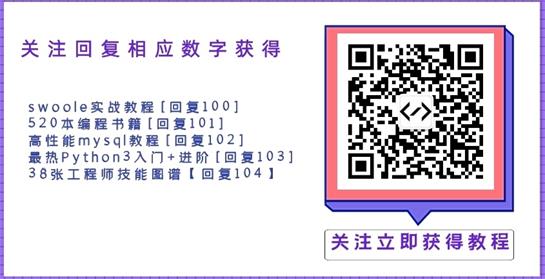一直对使用DRF的了解停留在一知半解的状态,今天在实际操作中,感受到了DRF带来的方便
Django工程,其中两个model定义如下:
AutomationHeadRaw: class AutomationHeadRaw(models.Model): """ 测试用例的请求的json形式参数 """ id = models.AutoField(primary_key=True) automationCaseApi = models.OneToOneField(AutomationCaseApi, related_name='headRaw', on_delete=models.CASCADE, verbose_name='接口') data = models.TextField(verbose_name='源数据请求头json数据', blank=True, null=True) class Meta: verbose_name = '请求头json格式参数' verbose_name_plural = '请求头json格式参数管理'
AutomationCaseApi:
class AutomationCaseApi(models.Model):
"""
用例执行接口
"""
id = models.AutoField(primary_key=True)
automationTestCase = models.ForeignKey(AutomationTestCase, on_delete=models.CASCADE,
verbose_name='用例', related_name="api")
name = models.CharField(max_length=50, verbose_name='接口名称')
httpType = models.CharField(max_length=50, default='HTTP', verbose_name='HTTP/HTTPS', choices=HTTP_CHOICE)
requestType = models.CharField(max_length=50, verbose_name='请求方式', choices=REQUEST_TYPE_CHOICE)
apiAddress = models.CharField(max_length=1024, verbose_name='接口地址')
requestParameterType = models.CharField(max_length=50, verbose_name='参数请求格式', choices=REQUEST_PARAMETER_TYPE_CHOICE)
headType = models.CharField(max_length=50, verbose_name='请求头部格式', choices=REQUEST_PARAMETER_TYPE_CHOICE)
formatRaw = models.BooleanField(default=False, verbose_name="是否转换成源数据")
examineType = models.CharField(default='no_check', max_length=50, verbose_name='校验方式', choices=EXAMINE_TYPE_CHOICE)
httpCode = models.CharField(max_length=50, blank=True, null=True, verbose_name='HTTP状态', choices=HTTP_CODE_CHOICE)
responseData = models.TextField(blank=True, null=True, verbose_name='返回内容')
# 新增用例相关参数
preFun = models.CharField(max_length=1024, blank=True, null=True, verbose_name='前置函数')
afterFun = models.CharField(max_length=1024, blank=True, null=True, verbose_name='后置函数')
skipFlag = models.CharField(max_length=50, blank=True, null=True, verbose_name='跳过标识', choices=Y_N_CHOICE)
stopFlag = models.CharField(max_length=50, blank=True, null=True, verbose_name='中断标识', choices=Y_N_CHOICE)
retryNum = models.IntegerField(verbose_name='重试次数', default=1)
def __unicode__(self):
return self.name
def __str__(self):
return self.name
class Meta:
verbose_name = '用例接口'
verbose_name_plural = '用例接口管理'
1、手工转换获取到了AutomationHeadRaw模型中的data数据(json格式)
需求为取AutomationHeadRaw模型中的data数据(json格式),我在使用的时候,没有给AutomationHeadRaw建立对应的序列化类,取数时使用一下数据获取data数据:
head_test = AutomationHeadRaw.objects.filter(automationCaseApi=self.case_api_id)
self.header =json.loads(json.loads(serializers.serialize('json', head))[0]["fields"]["data"])
手工转换获取到了AutomationHeadRaw模型中的data数据(json格式)
2、自动转换获取到了AutomationCaseApi模型中的data数据
另一个模型AutomationCaseApi ,定义了对应的model序列化类AutomationCaseApiSerializer如下:
class AutomationCaseApiSerializer(serializers.ModelSerializer):
"""
自动化用例接口详细信息序列化
"""
headers = AutomationHeadSerializer(many=True, read_only=True)
headRaw = AutomationHeadRawSerializer(many=False, read_only=True) # 一对一表格,变量名一定要和model定义relate-name一直
parameterList = AutomationParameterSerializer(many=True, read_only=True)
parameterRaw = AutomationParameterRawSerializer(many=False, read_only=True)
class Meta:
model = AutomationCaseApi
fields = ('id', 'name', 'httpType', 'requestType', 'apiAddress', 'headers', 'headType', 'requestParameterType',
'headRaw', 'formatRaw', 'parameterList', 'parameterRaw', 'examineType', 'httpCode', 'responseData', 'preFun',
'afterFun', 'skipFlag', 'stopFlag', 'retryNum')
则获取模型AutomationCaseApi可以自动转换:
self.case_data = AutomationCaseApiSerializer(
AutomationCaseApi.objects.get(id=self.case_api_id, automationTestCase=self.case_id)).data
3、因此上面的AutomationHeadRaw 可以通过添加model序列化类AutomationHeadRawSerializer自动转换数据格式:
class AutomationHeadRawSerializer(serializers.ModelSerializer):
自动化用例接口json类型请求头信息序列化
class Meta:
model = AutomationHeadRaw
fields = ('id', 'automationCaseApi', 'data')获取数据语句可以改成,不需要手工转换:
head = AutomationHeadRawSerializer(
AutomationHeadRaw.objects.filter(automationCaseApi=self.case_api_id),
many=True).data
注意:
上面获取数据的AutomationHeadRawSerializer()方法,入参1 :AutomationHeadRaw.objects.filter(automationCaseApi=self.case_api_id)
可以为两种对象:
AutomationHeadRaw.objects.filter(automationCaseApi=self.case_api_id) (filter方法对象为queryset类型)
AutomationCaseApi.objects.get(id=self.case_api_id, automationTestCase=self.case_id)(get方法对象为model类 类型)
以上就是本文的全部内容,希望对大家的学习有所帮助,也希望大家多多支持自学编程网。

- 本文固定链接: https://zxbcw.cn/post/199573/
- 转载请注明:必须在正文中标注并保留原文链接
- QQ群: PHP高手阵营官方总群(344148542)
- QQ群: Yii2.0开发(304864863)
